To maximize the genetic potential of broiler breeders, management details are important. The foundation for high productivity is in rearing. To achieve peak production, prepare pullets in optimal conditions for good persistency and low mortality later in lay.
Uniformity
The goal in rearing is to have a sexually uniform flock with the correct body conformation for age. With high sexual uniformity, birds will peak sooner and persist laying longer. Feed and weight gain can also be easier to manage, and uniform flocks have lower mortality than non-uniform flocks.
The first days for the chicks will influence how the uniformity will develop. Provide 50 g feed per bird before placement, and a floor temperature of at least 28 ̊C. After 24 hours, 95% of the crops should feel soft and pliable, indicating that the chicks have successfully located feed and water.
The second week after the chicks have reached their target weight, they should start on controlled feeding to limit growth, which may lead to competitive behavior. There is also a difference in eating capacity between the chicks – some will eat faster than others, influencing the nutrient intake.
In the first eight weeks skeleton uniformity is determined. In this period, the aim is to bring all chicks to the same frame size. High skeleton uniformity makes it easier to bring all birds to the correct body conformation after 12 weeks. Birds with a smaller frame get fleshed faster and often over fleshed on the same feed intake as larger framed birds.
While in rearing, the uniformity should never decrease. To increase the uniformity it is strongly recommend to grade the birds at a young age. With grading, the birds will be split into smaller groups with the advantage of less competition for feed.
The first grading should be done at seven days – and certainly not later than three to four weeks. It is important to induce good immunity in the first weeks. If the birds are being placed in other houses as part of the grading process, you should consider the coccidiosis vaccine and take the correct actions in combination with the correct age.
The chicks should be sorted into three groups – light, standard and heavy. The standard group should be around 50%-60% of the flock.
It is essential that the different groups can be fed differently to manage them according to their bodyweights. At eight weeks, 78% of skeleton is determined. The goal is to have all birds at that age on the same bodyweight.
Grading has a clear advantage in uniformity. If feed issues occur and there is no grading, there will be a big impact on the uniformity when the birds are on controlled feed. The birds with less appetite will be more affected than the fast eaters.
Body Conformation
Puberty starts at 12 weeks. Pullets should reach the correct body conformation by 20 weeks of age. Females need to reach the fleshing targets at 16 weeks so that the correct amount of abdominal fat will be deposited at 20 to 21 weeks (Table 1).
Evaluate the fleshing every two weeks and use fleshing as a guide to feed more or less. Strictly control body condition ensuring that birds do not become over fleshed. Breeders are innately high yielding, and therefore quickly breast muscle when the nutrient intake is too high, especially in amino acids. Higher breast muscle will require more energy to maintain.
For high production, females need body fat after photo stimulation at onset of lay. During the maintenance period (12 to 15 weeks) fleshing scores should be between 2 and 3. From 16 to 21 weeks, the fleshing must increase so that the fat deposition will also begin in that period.
Photo stimulate the flock between 21 and 22 weeks. All birds should have a fleshing score between 3 and 4, and at least 90% should have good fat reserves on the pelvic bones.
Bodyweight
Modern broiler breeders are very feed efficient and need fewer nutrients to reach the same bodyweight at 20 weeks. In the first four weeks, the objective is for good initial growth where the organs and immunity are developing. The chicks have to reach bodyweight targets with not more than 5% above target weight at four weeks.
Be aware that it takes two weeks before the given feed amount will be reflected in bodyweight gain. From five weeks up to 16 weeks, the bird’s growth must be controlled. Small feed increments are given in this period. Restricting nutrient intake will limit breast meat deposition and will enhance egg production.
Be aware that it takes two weeks before the given feed amount will be reflected in bodyweight gain. From 5 to 16 weeks, the bird’s growth must be controlled. Small feed increments are given in this period. Restricting nutrient intake will limit breast muscle deposition and will egg production.
To be sure all birds can eat at the same time, feed should be distributed in the dark in less than 3 minutes. The layout of the farm is important; the birds should be able to easily access the feeders and eat comfortably.
A feed space of 15 cm per bird is required after 12 weeks. In the maintenance period, it is very important to maintain flock uniformity and prevent pullets becoming overweight.
The diet should always be well-balanced to meets the bird’s requirements. For example, the first 10 weeks are very important for feather quality with particular demand for methionine and cysteine.
The Grower Phase
In the grower phase, lower energy diets may be used to give more volume of feed and increase feed time. It’s important to maintain the correct balance of nutrients in the feed. Alternatively, mash instead of crumble or pellets can be fed to increase feed time.
From 16 to 20 weeks, the hormonal process starts, and the birds have to accelerate growth and begin to deposit fat. The bodyweight curve must be redrawn at 16 weeks if the females are overweight. They should maintain this excess weight at least to 20 weeks of age to get the appropriate amount of increase in body weight. In the period between 16 to 20 weeks, the females should increase their bodyweight at least 34 %.
Summary
A good investment in rearing will pay off in production. Today’s broiler breeders have excellent genetic potential. Correct preparation is essential in rearing, which means high sexual uniformity, a bodyweight gain of >34% between 16 and 20 weeks, and correct fleshing and fat reserves at 20 weeks.

